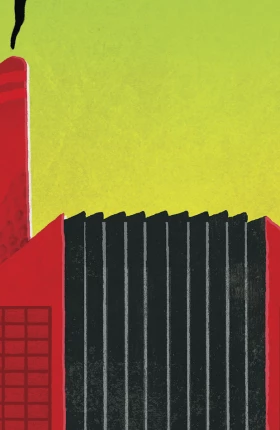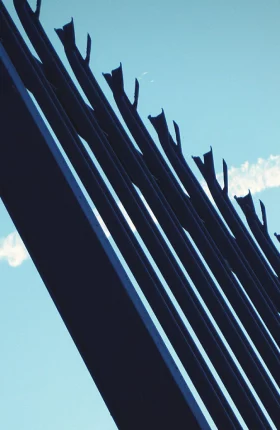It all worked fine for a while. But for many capital equipment manufacturers, the pursuit of higher returns on assets in the 1980s and ‘90s has led to systemic underperformance in recent years.
As OEMs shed assets and pushed work out through their supply chains in search of higher returns, their short-term performance received a big lift. But in the process, they transferred longer-term profits to their system suppliers, and, more significant, they began the steady erosion of their own strategic capabilities. It was a short-lived benefit.
Capital equipment OEMs are now feeling the adverse effects of strategic decisions made a generation or two ago. To reverse the damage, these companies need to take a fresh look at their supply chains and rethink which capabilities they need to own. Failing to do so, and quickly, means missing multiple generations of technology development—a prescription for disaster in long-cycle businesses such as capital equipment manufacturing.
A Short History of Asset-Light Supply Chains
The history of capital equipment is one of vertically integrated sectors. Aerospace, automotive, and power equipment, among others, all evolved as vertically integrated industries through the 1980s. System integrators are a more recent development.
In commercial airplanes, for example, Boeing, Douglas, and McDonnell (and their successor combinations) were all vertically integrated. Aircraft manufacturers sourced parts, of course, but all the major systems (except for engines, which evolved as its own—vertically integrated—industry) were developed and produced by OEMs.
Starting in the 1980s, capital equipment companies increasingly measured performance by return on net assets (RONA). In addition to working the numerator (the return, or profits), companies started to alter the denominator by shedding assets. Balance sheets looked much tighter almost immediately, and RONA soared. All kinds of asset-light business models followed: licensing deals, outsourced development partnerships, and risk-sharing partnerships, to name a few.
For the first decade or decade and a half, this new paradigm looked good. Asset turns were higher, margins were preserved. The impact on the income statement would come later.
The Problems of Asset-Light Business Models in Capital Equipment
As the early 2000s played out, a number of problems arose (some might say inevitably). They were rooted in two factors. First, the moves of the previous decades traded future profits for lower current investment and fewer assets on the balance sheet. Second, the supply contracts that were created contained a critical flaw for the OEMs: they were written for existing technologies and did not make provisions for what would happen if (or when) the technology evolved and new investments became necessary.
Some of today’s problems (described below) are specific to capital equipment, while others are more general. The most critical are strategic as well as financial, and they are very damaging to OEMs’ long-term competitive position and performance.
Continually Shrinking Margins. For most OEMs, aftermarket profits are made in systems and subsystems, not in maintenance of the overall platform. Profits come from parts, not service, and parts are linked to systems. As OEMs have transferred responsibility for designing and producing systems to their suppliers, they have relinquished control of the aftermarket and the associated profit streams. This transition became apparent as older parts (owned by the OEMs) wore out and were replaced by new parts—now sold by suppliers.
Technical Atrophying. Capital equipment typically has a 5- to 15-year product refresh cycle. Following the transfer of a system from the OEM to a supplier, the first integration is a relatively straightforward matter because the OEM continues to have a deep understanding of the system. In a sense, the OEM is still overseeing the development of the system in a hands-on manner; the only difference is that it is supervising outsourced labor. After one or two generations and the passage of 10 to 20 years, however, there is a complete turnover of engineering staff, and the OEM’s knowledge erodes. Over time, system integration costs and the related risks increase—costs and risks that are borne completely by the OEM. Time and again, the OEM has to step up to fix problems generated by its suppliers—fixes for which it is not compensated.
This problem can be magnified when the technology that was the basis for the system’s competitive advantage has moved on. For example, not that long ago, the highest-value avionics system on a military aircraft was a set of steam gauges. Over the course of a few decades, those gauges evolved into complex electronic, and increasingly digital, systems with their own modules, upgrades, and parts flow. As a result of this advancing technology, the avionics industry developed at the expense of the aircraft OEMs.
Having outsourced its technical capability, the OEM also loses the technical knowledge that is critical to its ability to negotiate effectively with the system supplier. Prices inevitably escalate.
Finally, as technology evolves, the supplier wants to be compensated not only for the investments required but also for the risks involved. The buyer (the OEM) ends up paying multiple times for the same investments.
Loss of Control over the Experience Curve. Capital equipment is an experience-based business. As companies produce units, they get smarter and more efficient at producing more units. The company that makes the parts gains a better understanding of how to make them cheaper and how to engineer them better.
In a business such as airplane, ship, or satellite manufacturing, it can be crippling to an OEM’s competitive position to lose control of experience curve benefits. In letting suppliers produce the complex systems, OEMs have effectively transferred the total experience benefit to the suppliers. It is now difficult for the OEMs to share in the cost improvements that the suppliers’ experience brings. The suppliers end up making more profits than the OEM that took on the responsibility (and risk) of developing the program in the first place.
Operational Complexity. With the shift toward the integration of complex supplied systems, supply chains have become much more difficult to manage. Complexity adds cost directly and also indirectly, in the form of increased inventories and the expense of delays and fixes. The impact is borne almost completely by the system integrator, since in all cases, the OEM maintains program risk. So when things go wrong with a supplier, the OEM steps in and incurs the cost of fixing it.
Deciding Which Systems and Capabilities to Bring Back In-House
We view the profits that the OEMs have ceded to their system suppliers as “leakage”—profits that the OEMs have enabled others to earn. The OEMs have done this by giving suppliers an advantaged position on the platform that the OEM created and on which it still holds the risk.
There is a very strong logic for OEMs to pull back some of their critical systems—and the associated technologies and capabilities. But which ones? And under what economic circumstances?
The first question for an OEM to ask itself is, Which systems and capabilities are most valuable to own? Three factors will determine the answer. The first is financial: which systems and components generate substantial aftermarket profit streams? The second is strategic: which systems and components encompass technologies that are critical to the competitive position of the product—today and in the future. Smart OEMs will recognize that the most critical technologies of the future are not always the key technologies of today. The third factor is also strategic: which systems and components have steep experience curves? Where does loss of experience and knowledge have an adverse impact on the first two factors?
The second question for the OEM to answer is, In which business cases does the value of bringing a system in-house offset the near-term costs of doing so? Such a case could involve acquisition premiums or big investments in organic technology development, for example. This is a harder question to answer. It requires a system-by-system and case-by-case analysis. We have seen multiple factors come into play, including the following:
- Technologies the OEM has spotted ahead of its supply base
- Arbitrage opportunities in which the OEM recognizes that the platform has a longer life than its suppliers see
- The OEM using control of a platform to favor its own systems
- The OEM spotting an abnormally profitable supplier situation and deciding to compete
- The OEM using the insights of a thoughtful make-or-buy decision to negotiate better terms from suppliers
The business case must also properly weigh the asymmetry in the risks that the OEM bears and the operational cost of the complexity of complex supply chains.
As a proviso for defense system integrators, we should observe that “fee on fee” is a real issue. The government allows OEMs to earn a margin on the procurement and logistics associated with buying systems that are later integrated. Depending on the program, this margin pool can be a significant source of profits for the OEM. Any vertical integration business case in defense systems needs to have an upside that offsets the erosion of the fee-on-fee profits.
In our judgment, both the financial and strategic rationales for rethinking asset-light business models are compelling. There is urgency to this decision. Technologies advance ever more quickly these days, and once lost, knowledge and experience become harder to regain. OEMs should take a deep look at their supply chains and decide if the configuration they have today is the configuration they want for tomorrow.





